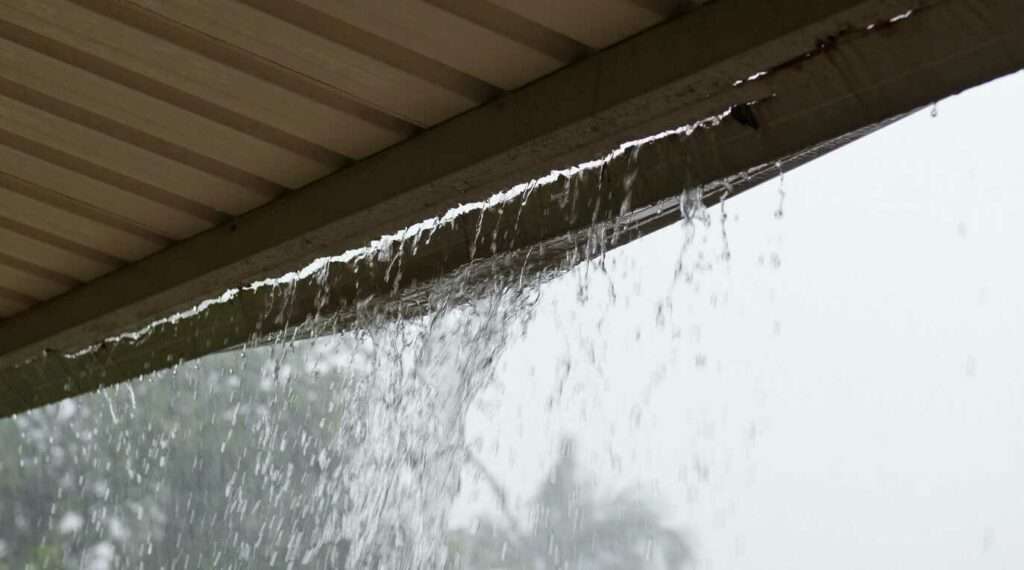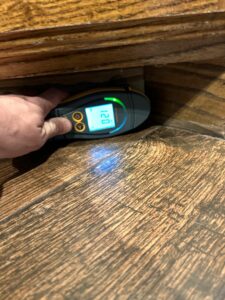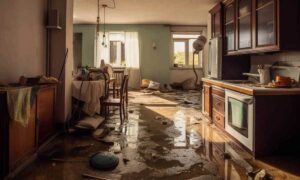Blogs
Rainwater Intrusion and Water Damage in Plano Homes

Rainwater intrusion and water damage can be a homeowner’s worst nightmare, especially here in Plano where unpredictable weather can bring heavy rains. If you’re noticing damp spots on your walls, musty smells, or even mold, it’s time to take action. Addressing these issues promptly not only prevents further damage but also saves you from expensive repairs down the road. From simple fixes to professional interventions, there are effective ways to protect your home and keep it dry. Through this guide, Intensa Dry tells how you can safeguard your property and ensure that rainwater doesn’t become a costly problem.
1. Causes of Rainwater Intrusion
Rainwater intrusion is a common concern for homeowners in Plano, Texas, where seasonal rains can be both a blessing and a curse. The primary causes of rainwater intrusion often stem from a combination of environmental factors and construction issues. Plano’s climate, characterized by occasional heavy rainfall and high humidity, can exacerbate vulnerabilities in a home’s exterior, leading to water seepage.
One of the most significant causes of rainwater intrusion is poor construction or maintenance. Over time, even well-built homes can develop weaknesses in their exterior envelope. Roofs, for instance, are particularly susceptible to wear and tear. Shingles can become damaged or displaced due to high winds, leaving the underlying roof structure exposed to rain. Flashing, which seals the intersections between the roof and other elements like chimneys or vents, can also deteriorate, allowing water to enter.
2. Common Areas Prone to Water Damage
Understanding where rainwater intrusion is likely to occur can help homeowners take preventative action. In Plano homes, several areas are particularly prone to water damage. Basements, although less common in Texas than in other parts of the country, are still present in some homes. These subterranean spaces are inherently prone to moisture issues because they are below ground level, making them a prime target for water intrusion, especially if the foundation is compromised.
Attics are another vulnerable area. Water can enter through roof leaks, and because attics are often out of sight, the damage can go unnoticed until it becomes severe. Water damage in the attic can lead to issues like mold growth and insulation degradation, which can compromise the energy efficiency of the home.
3. Signs of Water Damage
Recognizing the signs of water damage early can save homeowners in Plano from costly repairs. One of the most visible signs is water stains on ceilings or walls. These stains often appear as discolored patches, indicating that water has seeped through the roof or walls. Peeling paint or wallpaper is another sign, as moisture behind the surface can cause adhesives to weaken, leading to bubbling or peeling.
Musty odors are a strong indicator of water damage, particularly if mold or mildew has started to grow. Mold thrives in damp, dark environments, so a musty smell in certain areas of the home could suggest hidden water damage. Warped wood or buckled floors are more severe signs of water damage. When wood absorbs moisture, it can expand and deform, leading to structural issues that may require extensive repairs.
4. Preventive Measures
Prevention is key when it comes to protecting your Plano home from rainwater intrusion. Regular maintenance and inspections can go a long way in preventing water damage. Start with the roof, as it is the first line of defense against rainwater. Regularly inspect your roof for damaged or missing shingles, and ensure that flashing is intact. If your roof is aging, consider a professional inspection to assess its condition and identify potential problem areas.
Sealing gaps around windows and doors is another effective preventive measure. Use caulk or weatherstripping to seal any visible gaps, and replace old or damaged seals as needed. Additionally, consider installing storm windows or doors for added protection against wind-driven rain.
5. Dealing with Water Damage

If rainwater has already intruded into your Plano home, it’s crucial to address the damage promptly to prevent further issues. The first step is to identify the source of the water and stop it from entering. This may involve temporary measures like covering roof leaks with tarps or using dehumidifiers to reduce indoor moisture levels.
Once the source is contained, begin the drying process as quickly as possible. This might involve professional water damage mitigate services if the damage is extensive. Drying out the affected areas is critical to prevent mold growth and further structural damage. Any materials that have been saturated, such as drywall, insulation, or carpeting, may need to be removed and replaced.
6. Hiring Professional Help
While some water damage repairs can be handled by homeowners, significant issues often require professional intervention. Water damage restoration companies have the expertise and equipment to thoroughly dry out affected areas, remove damaged materials, and restore your home to its pre-damage condition. They can also identify hidden damage that may not be immediately apparent, such as mold growth behind walls or structural weaknesses.
In addition to restoration professionals, you may want to consult with waterproofing specialists to prevent future rainwater intrusion. These experts can assess your home’s vulnerabilities and recommend long-term solutions, such as installing French drains, sump pumps, or applying waterproof coatings to vulnerable areas.
7. Long-Term Effects of Water Damage
Water damage, if left unaddressed, can have severe long-term effects on a home. One of the most concerning outcomes is structural damage. Over time, continuous exposure to water can weaken the integrity of the home’s foundation, walls, and support beams. Wood, in particular, is vulnerable to rot when it remains wet for extended periods. This deterioration can compromise the stability of the structure, leading to costly repairs or even making the home unsafe.
In addition to structural issues, prolonged water damage can result in significant health hazards. Mold and mildew thrive in damp environments, and once they take hold, they can be difficult to eradicate. Mold spores can circulate through the home’s air, leading to respiratory problems, allergies, and other health issues, particularly for individuals with preexisting conditions like asthma.
8. Impact on Property Value
The presence of water damage can have a significant impact on a home’s property value. When it comes time to sell, potential buyers are likely to be wary of a home that shows signs of water intrusion or damage. Even if the damage has been repaired, a history of water issues can raise red flags, leading to lower offers or a longer time on the market.
In severe cases, unresolved water damage can render a home virtually unsellable until the problems are fully addressed. For this reason, it’s crucial for homeowners in Plano to stay proactive in maintaining their property and preventing water damage from occurring. Regular inspections, prompt repairs, and comprehensive waterproofing measures can help preserve the home’s value and make it more attractive to potential buyers.
9. Insurance Considerations

Water damage is one of the most common types of homeowners’ insurance claims, but not all types of water damage are covered. It’s important for homeowners in Plano to understand the specifics of their insurance policies. Standard homeowners’ insurance typically covers sudden and accidental water damage, such as damage caused by a burst pipe or an unexpected roof leak.
When filing a claim, thorough documentation is key. Homeowners should take photos of the damage, keep records of all repair costs, and communicate clearly with their insurance provider to ensure they receive the coverage they are entitled to.
10. Local Building Codes and Regulations
In Plano, as in many other areas, local building codes and regulations play a crucial role in preventing water damage. These codes set the standards for construction practices, including requirements for waterproofing, drainage, and structural integrity. Homeowners and contractors must adhere to these regulations to ensure that homes are built or renovated to withstand the local climate conditions.
For example, Plano’s building codes may specify certain materials or construction techniques for roofing, siding, and foundations that are better suited to the area’s weather patterns. Compliance with these codes is not only a legal requirement but also a critical factor in preventing rainwater intrusion and subsequent water damage.
11. Seasonal Maintenance Tips
Regular seasonal maintenance is essential in preventing rainwater intrusion and water damage in Plano homes. In the spring, after the potential damage from winter freezes, homeowners should inspect their roofs, gutters, and downspouts. During the summer, when Plano can experience sudden, intense storms, it’s important to keep an eye on the weather and ensure that all windows and doors are properly sealed.
Fall is an ideal time to prepare for the cooler, wetter months ahead. This includes clearing gutters of fallen leaves, checking for roof leaks, and ensuring that the home’s heating system is ready for the winter. Winter in Plano may bring occasional freezes, so it’s important to protect pipes from freezing by insulating them and ensuring that the home’s heating system is functioning properly. Regularly checking the roof for ice dams and ensuring proper ventilation in the attic can also prevent water damage from melting ice.
12. Advanced Waterproofing Solutions
For homeowners looking to go beyond basic maintenance, advanced waterproofing solutions can provide added protection against rainwater intrusion. These solutions are particularly valuable for homes in areas prone to heavy rainfall or for older homes with existing vulnerabilities.
Another effective solution is the application of waterproof coatings or sealants to the exterior of the home. These coatings can be applied to roofs, walls, and foundations to create a barrier against water. In areas with significant rain exposure, rubberized coatings or elastomeric paints can provide additional protection.
13. Future-Proofing Your Home Against Water Damage
As climate patterns continue to shift and extreme weather events become more frequent, future-proofing your home against water damage is increasingly important. Homeowners in Plano can take proactive steps to protect their properties from the long-term risks associated with water intrusion.
Investing in smart home technology, such as water sensors and automated shut-off valves, can provide early detection of leaks and prevent extensive damage. These systems can alert homeowners to water issues before they become serious, allowing for quick action.
Finally, staying informed about local weather patterns and potential changes in building codes can help homeowners anticipate future challenges. By combining these strategies, homeowners in Plano can ensure that their homes are well-protected against the increasing risks of water damage.
Conclusion
In conclusion, dealing with rainwater intrusion and water damage in your Plano home is crucial for maintaining its value and safety. By staying vigilant for signs of moisture problems and addressing them quickly, you can prevent more significant issues and avoid costly repairs. Whether you opt for DIY solutions or seek professional help, the key is to act before minor leaks turn into major headaches. Protecting your home from water damage not only ensures a healthier living environment but also provides peace of mind knowing your property is well-maintained. Remember, a little preventive care can go a long way in preserving your home’s integrity.

